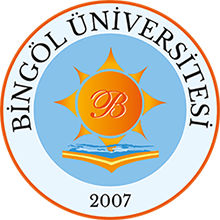| dc.contributor.advisor | Dr. Öğr. Üyesi Servet KILIÇ | en_US |
| dc.contributor.author | ÇELEPKOLU, Kasım | |
| dc.date.accessioned | 2025-11-26T07:13:17Z | |
| dc.date.available | 2025-11-26T07:13:17Z | |
| dc.date.issued | 2025 | |
| dc.identifier.uri | https://acikerisim.bingol.edu.tr/handle/20.500.12898/5977 | |
| dc.description.abstract | ÖZET:
Kur’an-ı Kerim, İslam dininin temel kaynağı olup, Müslüman toplumlarında büyük önem taşımaktadır. Kur’an eğitimi, klasik kaynaklarda “müşâfehe” (yüz yüze eğitim) ve “fem-i Muhsin” (yetkin ağızdan eğitim) gibi yöntemle desteklenen uygulamalı bir öğretim yöntemine dayanır. Türkiye’de din eğitiminin kurumsal çerçevesini oluşturan İmam Hatip Liseleri, Kur’an-ı Kerim ve kıraat eğitimini sistemli biçimde sunan önemli kurumlardır. Ancak bu süreçte, özellikle mahreçlerin doğru çıkarılması, kıraat farklılıklarının kavratılması ve müfredatın yeterliliği gibi alanlarda çeşitli zorluklarla karşılaşılmaktadır. Bu çalışmada, Siirt ili örneğinde İmam Hatip Liselerinde Kur’an-ı Kerim ve kıraat eğitimi çok yönlü olarak incelenmiş; öğrenci ve öğretmen görüşleri doğrultusunda memnuniyet düzeyi, öğretim etkinliği ve karşılaşılan sorunlar değerlendirilmiştir. Betimsel tarama modeline dayalı araştırma kapsamında, 2024-2025 eğitim-öğretim yılında görev yapan öğretmenler ve öğrenim gören öğrencilerden oluşan bir örnekleme anket uygulanmış, veriler SPSS 22.0 programı ile analiz edilmiştir. Elde edilen bulgulara göre, öğrencilerin büyük bir kısmı (%71,1) Kur’an-ı Kerim dersinden memnun olduğunu belirtmiştir. Bununla birlikte, ders saati yetersizliği (%35,0), kıraat ilminin müfredata sınırlı yansıması (%47,4) ve özel tilavet sınıflarının eksikliği (%57,9 öğrenci, %74,1 öğretmen) önemli sorunlar arasında yer almıştır. Mahreçlerin doğru çıkarılmasının (%80,8) ve kıraat ilmine dair bilgilerin artırılmasının (%79,3) eğitimde temel ihtiyaçlar olduğu vurgulanmıştır. Öğretmenlerin %67,9’u ders programını yeterli bulurken, branşlaşmanın kaliteyi artıracağı görüşü (%92,9) güçlü bir şekilde dile getirilmiştir. Sonuç olarak, Kur’an-ı Kerim öğretiminin etkili bir şekilde sürdürülebilmesi için müfredatın gözden geçirilmesi, uygulamalı öğretim ortamlarının artırılması, öğretmenlerin mesleki gelişimlerinin desteklenmesi ve tilavet/kıraat derslerine ayrılan sürenin genişletilmesi gerektiği ortaya konmuştur. | en_US |
| dc.description.abstract | ABSTRACT:
The Holy Quran is the main source of the Islamic religion and is of great importance in Islamic societies. Quran education, in classical sources, is based on a practical teaching method supported by principles such as "mushafaha" (face-to-face teaching) and "femi muhsin" (education from a proficient mouth). Imam Hatip High Schools, which form the institutional framework of religious education in Turkey, are important institutions that systematically offer Quran and Qira'at education. However, various difficulties are encountered in this process, especially in areas such as the correct pronunciation of articulation points, the understanding of recitation differences, and the adequacy of the curriculum. In this study, Quran and Qira'at education in Imam Hatip High Schools in the province of Siirt was examined from a multifaceted perspective; the level of satisfaction, teaching effectiveness, and problems encountered were evaluated in line with student and teacher opinions. Within the scope of a descriptive survey model research, a questionnaire was administered to a sample consisting of teachers working and students studying in the 2024-2025 academic year, and the data were analyzed with the SPSS 22.0 program. According to the findings, a large portion of the students (71.1%) stated that they were satisfied with the Quran lesson. However, the inadequacy of class hours (35.0%), the limited reflection of the science of Qira'at in the curriculum (47.4%), and the lack of special recitation classes (57.9% of students, 74.1% of teachers) were among the significant problems. The correct pronunciation of articulation points (80.8%) and the increase in knowledge about the science of Qira'at (79.3%) were emphasized as fundamental needs in education. While 67.9% of the teachers found the course program sufficient, the opinion that specialization would improve quality (92.9%) was strongly expressed. In conclusion, it has been demonstrated that in order to effectively sustain Quran teaching, the curriculum needs to be revised, practical teaching environments should be increased, the professional development of teachers should be supported, and the time allocated to recitation/Qira'at lessons should be extended. | en_US |
| dc.language.iso | Turkish | en_US |
| dc.rights | info:eu-repo/semantics/openAccess | en_US |
| dc.subject | Kur’an-ı Kerim Eğitimi, Kıraat İlmi, Tecvid, İmam Hatip Liseleri, Siirt, Din Eğitimi, Öğretmen-Öğrenci Görüşleri. | en_US |
| dc.subject | Quran education, Qira'at science, Tajwid, Imam Hatip High Schools, Siirt, religious education, teacher-student opinions. | en_US |
| dc.title | İmam Hatip Liselerinde Kur’an-I Kerim Eğitimi ve Kıraat İlmi Açısından Bir Değerlendirme Siirt İli Örneği | en_US |
| dc.title.alternative | An Evaluation of Quran Education and Recitation Science in Imam Hatip High Schools: Siirt Province Example | en_US |
| dc.type | Master's Thesis | en_US |
| dc.contributor.department | Institute of Recitat | en_US |














